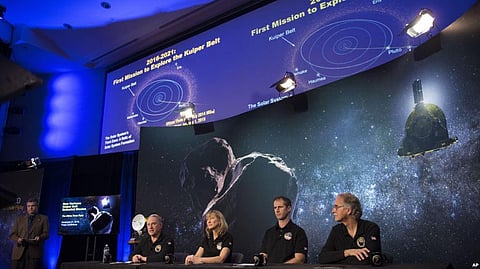
- Home
- न्यूजग्राम
- India
- World
- Politics
- Entertainment
- Culture
- Lifestyle
- Economy
- Sports
- Sp. Coverage
- Misc.
- NewsGram Exclusive
- Jobs / Internships

Just 33 minutes into the New Year, NASA's New Horizons probe will make space exploration history, flying by the most distant body ever explored.
The probe, launched in January 2006, will fly within 3,540 kilometers of 2014 MU69, dubbed Ultima Thule, a Latin phrase meaning beyond the known world.
In 2015, New Horizons flew by Pluto, then the farthest object visited by a spacecraft from Earth. This time the encounter will take place 1.6 billion kilometers past Pluto, some 6.5 billion kilometers from Earth.
This illustration provided by NASA shows the New Horizons spacecraft. NASA launched the probe in 2006; it's about the size of a baby grand piano. VOA
"Today is the day we explore worlds farther than ever in history!! EVER," tweeted the project's lead scientist, Alan Stern of the Southwest Research Institute.
He called it an auspicious beginning to 2019, which will mark the 50th anniversary of Neil Armstrong and Buzz Aldrin's footsteps on the moon in July 1969.
Ultima Thule was discovered in June 2014 by NASA's Hubble Space Telescope, which was trying to find new targets for New Horizons in the Kuiper Belt, the third region of the solar system.
New Horizons, which is the size of a baby grand piano and part of an $800 million mission, will collect data for four hours after the flyby. After that the probe will return toward Earth to transmit a signal announcing its progress.
"I can't promise you success. We are straining the capabilities of this spacecraft," Stern said at a news conference Monday. "By tomorrow, we'll know how we did. So stay tuned. There are no second chances for New Horizons." (VOA)
